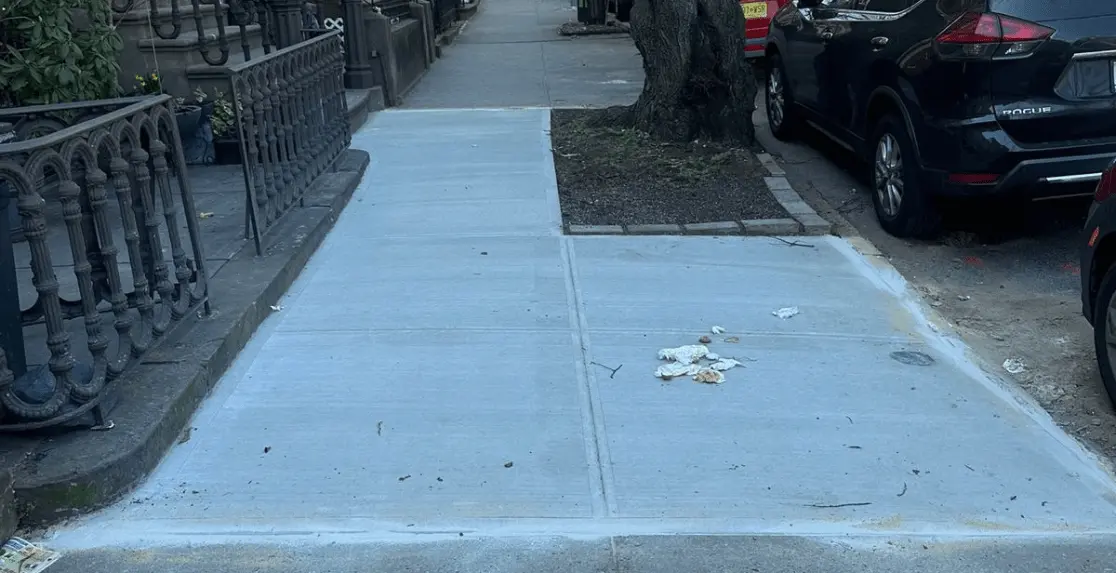Uneven sidewalks not only detract from your property’s curb appeal but can also pose safety hazards. While some repairs might be best left to professionals, many homeowners can successfully tackle minor sidewalk cracks and damage themselves. This step-by-step guide equips you with the knowledge and confidence to undertake a DIY sidewalk repair project.
Before You Begin
- Assess the Damage: Carefully evaluate the extent of the cracks. Shallow cracks (less than ½ inch deep) are generally suitable for DIY repair. For deeper cracks, uneven slabs, or extensive damage, consider consulting a professional.
- Gather Information: Research local regulations regarding sidewalk repair or you can hire a local sidewalk repair contractor. Permits may be required depending on your location and the severity of the damage.
- Safety First: Wear proper safety gear, including gloves, eye protection, and closed-toe shoes, to minimize the risk of injury.
Materials and Tools
- Safety Gear: Gloves, eye protection, closed-toe shoes
- Concrete Patching Material: Choose a pre-mixed concrete patching compound suitable for exterior use.
- Masonry Trowel: For applying and smoothing the patching material.
- Stiff Broom: To clean the damaged area.
- Garden Hose: For rinsing the area before applying the patch.
- Shop Vacuum (Optional): To remove any loose debris from the crack.
- Caulk Gun (Optional): For applying a sealant to the finished patch (consult product instructions).
Step-by-Step Guide
Preparation
- Clear the Area: Remove any furniture, plants, or obstacles from the work area.
- Clean the Crack: Use a stiff broom to remove loose dirt, debris, and weeds from the crack and surrounding area.
- Widen the Crack (Optional): For deeper cracks (¼ inch or more), use a masonry chisel and hammer to widen the top portion of the crack slightly, creating a V-shaped groove. This allows for better adhesion of the patching material.
- Rinse the Area: Thoroughly rinse the crack and surrounding area with clean water from your garden hose. Allow the area to dry completely before proceeding.
Mixing the Patching Material
- Follow the manufacturer’s instructions on the patching compound package for proper mixing ratios and techniques.
- Generally, you’ll mix the dry patching material with water to create a thick, workable consistency.
Applying the Patch
- Wear gloves and eye protection.
- Using the masonry trowel, apply the patching material firmly into the crack, filling it completely.
- Ensure the patch is level with the surrounding sidewalk surface.
- Smooth the surface of the patch with the trowel to create a clean finish.
Curing
- Refer to the manufacturer’s instructions for the recommended curing time for the patching material.
- Generally, it’s best to avoid walking on the repaired area for 24-48 hours to allow the patch to cure properly.
Finishing Touches (Optional)
- Once the patch is fully cured, you can apply a sealant around the edges to help prevent future cracking. Use a caulk gun to apply the sealant according to the product instructions.
Additional Tips
- Work in moderate temperatures. Avoid extreme heat or cold, as this can affect the curing process.
- If the crack is very narrow, you can use a product specifically designed for hairline cracks, which often come in a squeeze tube for easy application.
- For larger cracks or uneven slabs, consider using a concrete backer rod before applying the patching material. The backer rod fills the void beneath the surface, allowing you to use less patching material.
When to Call a Professional
While DIY repair can be suitable for minor cracks, consider seeking professional help for the following:
- Deep cracks (½ inch or more).
- Uneven slabs or settled sidewalks.
- Extensive damage requiring significant concrete replacement.
- Uncertainty about local regulations or permits. HomePage
Conclusion
By following these steps and safety precautions, you can successfully tackle minor sidewalk repairs and maintain the safety and aesthetics of your property. Remember, if the damage is beyond your comfort level or expertise, don’t hesitate to consult a professional for a more comprehensive repair solution.











